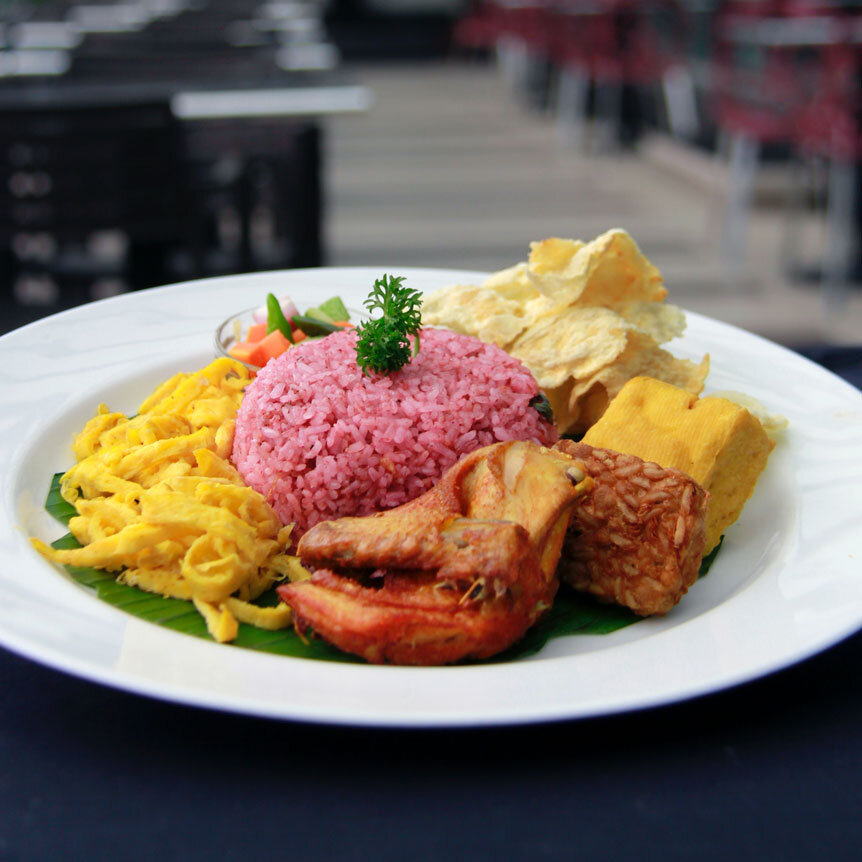Yes — you can eat healthy hawker food in Singapore
And avoid the post-meal food coma, too. Nutritionist Charlotte Mei reveals how
Text: Charlotte Mei
Eating less sugar, salt, bad fats and carbs and piling up on fibre, vegetables and lean protein in our meals sounds pretty straight forward, right? But add a busy city lifestyle and minimal time to do meal prep and it’s off to our beloved hawker centre we go. Eating healthily doesn’t have to go out of the window though; all you need are some smart hawker meal choices and adaptations. We speak to Singapore nutritionist Charlotte Mei who reveals how we can build positive relationships with food across all spectrums.
Hawker food gets a bad rep for being unhealthy. Is this justified?
Charlotte: Look at each meal time as an opportunity to gain the nutrients we need in our diet. Strive to include carbohydrates, protein, and vegetables as much as you can. Hawker foods may not be the healthiest as many contain few vegetables and protein and high amounts of salt, sugar and fat.
However, you are the gatekeeper of your diet. No matter where you're eating, you can always make small tweaks to improve the nutrition balance of a dish — even at the hawker centre. Don't order blindly. Request more protein, leaner cuts of meat, more vegetables, less noodles or carbohydrates and less gravy. Simply by skipping the additional condiments such as soy sauce you will make a difference.
Tell us more about the food groups we should incorporate into our diet, and which hawker dishes balance these?
Charlotte: When it comes to carbohydrates, look for whole grain options. These are high in fibre, making them slower to digest so we don't experience blood sugar spikes. They’re good for gut health too. Examples include brown or red rice, chapati or brown rice vermicelli.
As for protein, there are two options — animal and plant protein. With animal protein, go for lean options and try to include fish at least 2–3 times a week. Plant protein, like tofu, tempeh, tau kee (bean curd skin), tau kwa (firm tofu) and lentils are often forgotten. I’d recommend sambal goreng, dhaal and yong tau foo.
My favourite dishes at the hawker are mixed rice and nasi padang, because I can choose exactly what I want on my plate. Think of it as a #buildyourown meal. Popiah and fish soup are also great options. When it comes to duck rice, I request extra cucumber and less gravy.
We love a good caifan meal (rice with an assortment of ingredients). What should be the balance between rice, meat/fish and vegetables?
Charlotte: Fill a quarter of your plate with complex carbohydrates, a quarter with protein, and half with vegetables. This is achievable at the hawker centre, just make sure you let the hawker uncle or auntie know.
Why do we get the post-hawker lunch slump?
Charlotte: The post-lunch slump is normal, whether you’re eating hawker or not. This is especially so when you’ve had a particularly large meal that includes refined carbohydrates, and it is worsened when you’re slumped in your office chair right after your meal.
A ‘food coma’ (or postprandial somnolence if you want to be posh), describes the feeling of sleepiness after eating. When food is digested, sugar is released into our bloodstream which spikes — and then plummets — our blood sugar levels and leaves us feeling drowsy. This is especially the case with refined carbohydrates which digest much faster than their high-fibre counterparts. Research also suggests that eating meals rich in tryptophan, an amino acid found in foods like turkey, chicken, eggs, milk, can also increase feelings of sleepiness.
What can we do to avoid drowsiness after a meal?
Charlotte: Choose more wholegrain, high-fibre foods. The fibre in them means they would take longer to digest, avoiding the blood glucose spikes. As a bonus, they keep you fuller for longer. When ordering drinks, try to stick to plain water or siu dai (less sugar) versions to avoid a blood glucose spike
Get some physical activity in after lunch; a walk, taking the stairs or even working at a standing desk. Lastly, make sure you get enough sleep at night and maintain a regular sleep pattern. Not only will it make you feel more alert generally, it will prevent snacking during the day bad food choices where ever you are.














